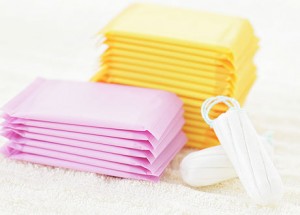Proper body intimate areas care is the key to women’s health. And in conditions of modern cities and poor ecology it became especially true. More and more new hygiene products for modern women are constantly being developed, making life more comfortable and convenient.
However, according to Canadian Health&Care Mall statistics, not all women are familiar with rules of proper care for sexual sphere. Mistakes in hygiene can lead to quite serious violations in reproductive health.

Intimate Washing
Intimate washing is part of daily hygiene, it is necessary to do in the morning and in the evening, and also before and after sexual intercourse. Many women constantly use intimate soap, often – antibacterial, which is a big mistake.
Vagina has its own microflora with weak acidic environment that is sensitive to soap alkalies, and antimicrobial agents kill beneficial lactobacilli, making environment for potentially pathogenic germs. With frequent intimate soap use bacterial vaginosis (vaginal dysbacteriosis) and vaginal yeast can be triggered.
It is enough to wash under warm running water: in the morning you can use soap and water, rest of the time – without it. Direct water spray to perineum and wash it from pubis to buttocks area, as return movement helps to throw germs from anal area into vagina.
After this procedure perineum should be dried with cotton cloth or towel that is used only by woman and only for intimate washing. The towel should be changed every 2 – 3 days, and for vaginal yeast and other diseases it is better to use disposable towels. Ordinary towels accumulate moist environment and germs can survive.
If the house is cut off the water or you are on a trip, use wet wipes specifically made for intimate hygiene. However, do not use them too often – they also influence microflora because of antimicrobial components.
Underwear
Certainly, lace panties made of elastic synthetic lace are beautiful and sexy, and thong-panties with thin strings are attractive. But this underwear is very harmful in terms of women’s health.
Thong actively rub vulvar cleft, and by translational movements along perineum transmit germs from anus to vulvar cleft. Those who wear this underwear all the time are more likely to have vaginal yeast and various inflammations.
The same applies to synthetic clothes – it does not allow skin to breathe, especially under tight clothing that disrupts skin’s natural ventilation and causes greenhouse effect. This leads to potentially pathogenic flora growth, vaginal and adnexal irritation and inflammation.
This underwear should be worn on a date, or with transparent cloths, and for everyday it is better to choose proper hygienic underwear – cotton panties with wide cotton gusset.
If you choose lace panties or thongs, pay attention to gusset: place where panties contact with perineum must be made of fabric, cotton.
Underwear must be changed every day, and in case of secretions – twice a day; panties are desirable to wash separately from other laundry.
Panty Liners
Panty liners are, of course, convenient – especially during the last days of menstruation or ovulatory secretions. Besides, a small amount of secretions may occur during the day, and panty liners prevent underwear from getting dirty.
But wearing them constantly is not recommended – panty liners prevent perineal skin from breathe, as its basis – waterproof material.
Panty liners should be changed every 3 – 4 hours, so that pathogenic microbes could not breed in warm and humid environment.
Hygiene during Menstruation
Today there are many tools for personal hygiene during menstruation. Which means to prefer? It depends on your selections amount, day of the cycle and circumstances, type of cloth, possibility of change cloths and of course your preferences.
 Usually women choose between using tampons and pads. Each of hygiene means has its pros and cons. Of course, tampons are invisible under close-fitting clothes, perineum skin does not sweat and breathe, using them you can wear short skirt or tight pants.
Usually women choose between using tampons and pads. Each of hygiene means has its pros and cons. Of course, tampons are invisible under close-fitting clothes, perineum skin does not sweat and breathe, using them you can wear short skirt or tight pants.
However, they create breeding environment for infection in vagina, and at bacterial and inflammatory infections using them forbidden at all. In addition, they must be changed more often, they may leak at the most inopportune moment, they are not always convenient to change, especially if you are not at home.
Puds have different shape, size and composition, the choice is yours, but natural materials prevent irritation.
Puds must be selected taking into account secretions and wear it not more than 4 – 5 hours, as microbes secreted together with menstrual discharge can multiply and cause skin irritation and infection. Before changing the pad, you should wash, and if you can not do that – at least use wipes for intimate hygiene.
Know-How
Today so-called menstrual cups, gain more and more popularity. This is a modern invention – something in between tampons and pads, and this is a reusable device, it is sterilized by boiling or disinfectant solution.
Menstrual cup is a small funnel mad of medical silicon or flexible plastic, chosen by size and placed in vagina. It accumulated menstrual blood. Several times a day this cup is carefully removed and blood is washed away. Then, the cap is disinfected and put back into place. The cap is not felt inside the body and does not interfere with daily life and work.
The device is hygienic and helps to save money on pads and tampons. But not all women feel its convenience from the first time, it takes time to get used to using and introducing it, for some women it is not suitable for health reasons or simply inconvenient.
Contraindications: inflammation, prohibition to use them by gynecologist because of problems in sexual sphere, postpartum bleeding (lochia) and allergies to medical silicon.

